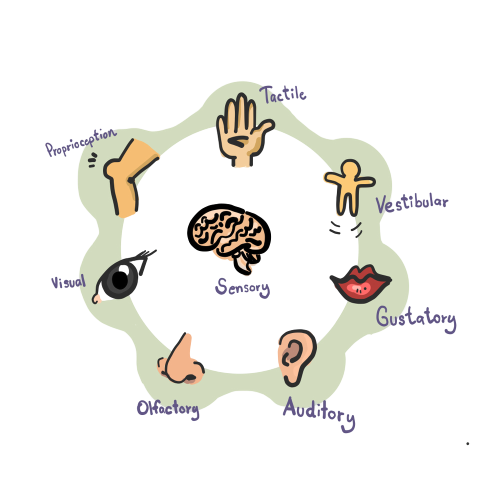Sensory Integration
Sensory Integration
Sensory integration is the normal neurological process of organizing sensations for effective response in our daily life. We use sensation to survive, satisfy our needs, learn, and function normally. Sensory integration is a normal procedure in which our brain receives sensory information from our bodies and surrounding environment, interprets this sensory information, and organizes or “integrates” our purposeful responses.
This integration allows us to respond automatically, efficiently, and comfortably in response to the specific sensory input we receive.
What is Sensory Input?
Stimuli we receive from the sensory organs are the sensory input. This input (movement, pressure, touch, vision, hearing, taste, and smell) goes to the brainstem mostly via the cranial nerves. All sensory input needs to be registered for integration.
The development of the sensory system begins in the womb and continues throughout our lives. The development of those senses is more in the early childhood that’s why this phase is called as sensory-motor years.
The child starts to refine those sensory processing through childhood activities. We know the most common senses (vision, hearing, smell, taste, and touch), but there are some more vital senses are present in our body. i.e vestibular and proprioceptive senses.

